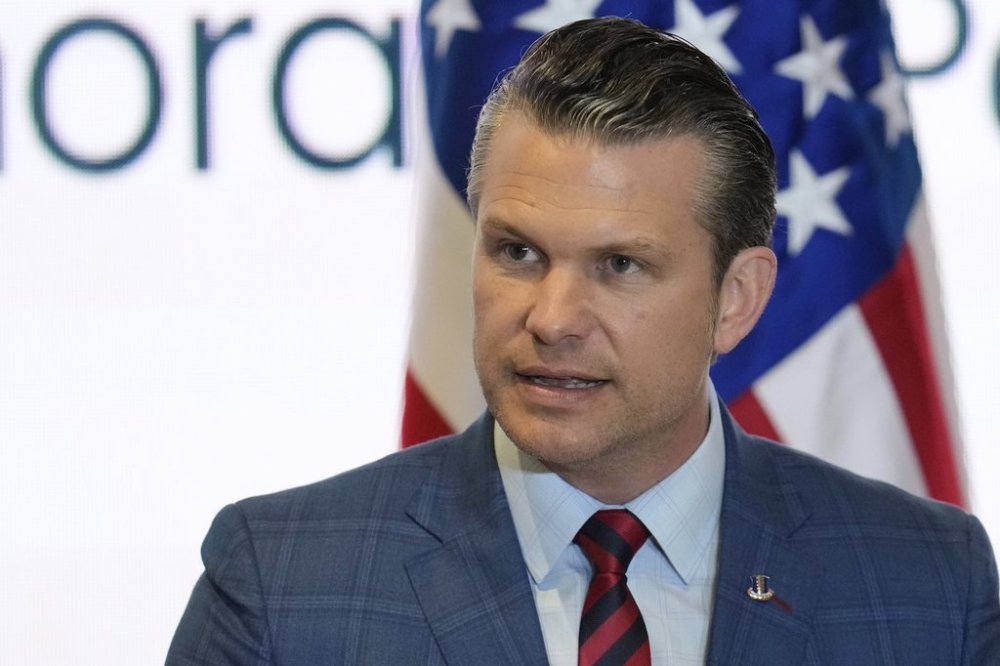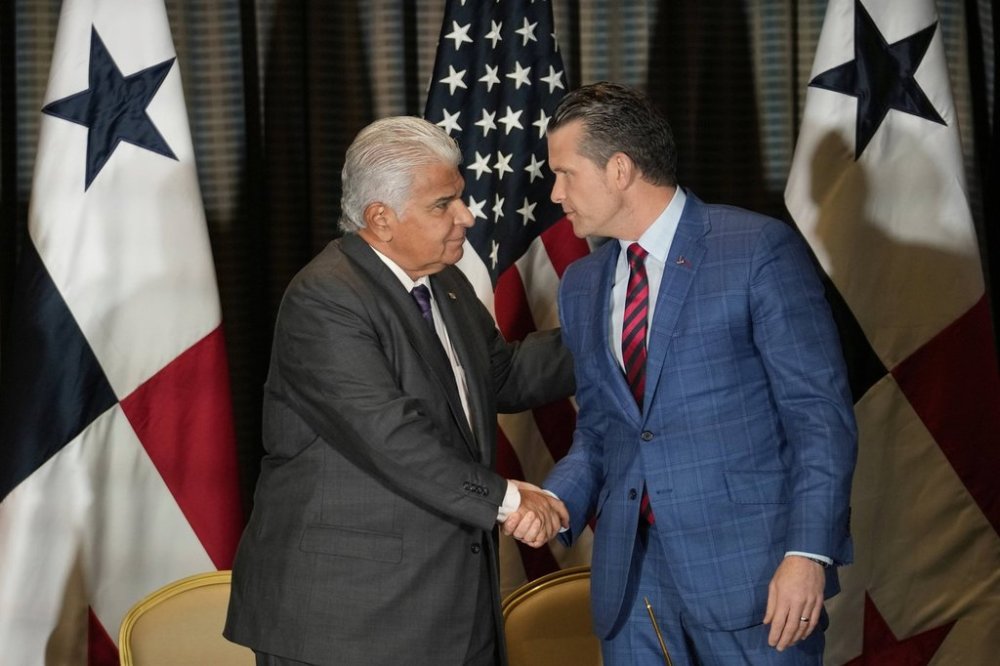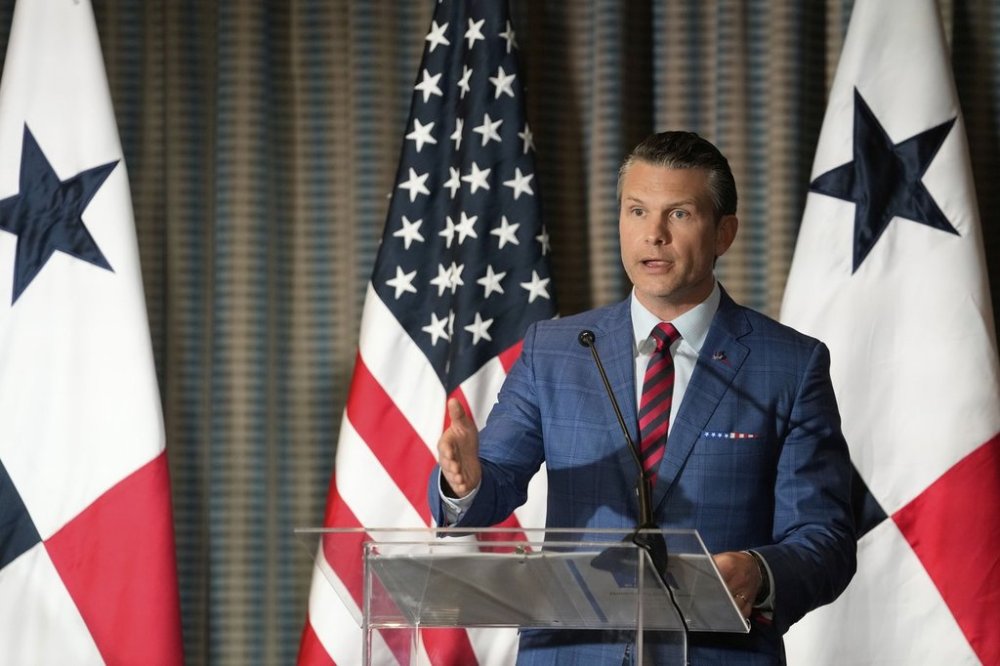Hegseth says China’s military presence in Western Hemisphere is ‘too large’
Advertisement
Read this article for free:
or
Already have an account? Log in here »
To continue reading, please subscribe:
Monthly Digital Subscription
$0 for the first 4 weeks*
- Enjoy unlimited reading on winnipegfreepress.com
- Read the E-Edition, our digital replica newspaper
- Access News Break, our award-winning app
- Play interactive puzzles
*No charge for 4 weeks then price increases to the regular rate of $19.00 plus GST every four weeks. Offer available to new and qualified returning subscribers only. Cancel any time.
Monthly Digital Subscription
$4.75/week*
- Enjoy unlimited reading on winnipegfreepress.com
- Read the E-Edition, our digital replica newspaper
- Access News Break, our award-winning app
- Play interactive puzzles
*Billed as $19 plus GST every four weeks. Cancel any time.
To continue reading, please subscribe:
Add Free Press access to your Brandon Sun subscription for only an additional
$1 for the first 4 weeks*
*Your next subscription payment will increase by $1.00 and you will be charged $16.99 plus GST for four weeks. After four weeks, your payment will increase to $23.99 plus GST every four weeks.
Read unlimited articles for free today:
or
Already have an account? Log in here »
Hey there, time traveller!
This article was published 09/04/2025 (210 days ago), so information in it may no longer be current.
PANAMA CITY (AP) — U.S. Secretary of Defense Pete Hegseth focused again on China’s presence in the Western Hemisphere Wednesday, one day after calling the world power a threat to the Panama Canal.
Speaking at a regional security conference, Hegseth said that China-based companies were controlling land and critical infrastructure in strategic sectors.
“China’s military has too large of a presence in the Western Hemisphere,” Hegseth said. “Make no mistake, Beijing is investing and operating in this region for military advantage and unfair economic gain.”

He called on the region’s governments to work together to deter China and address threats posed by transnational drug cartels and mass immigration.
Hegseth was speaking a day after meeting Panama’s President José Raúl Mulino and touring the Panama Canal. The two countries agreed to step up security coordination and appeared to say they would work toward a way to pay back fees that U.S. warships pay to pass through the Panama Canal.
The visit comes amid tensions over U.S. President Donald Trump’s repeated assertions that the U.S. is being overcharged to use the Panama Canal and that China has influence over its operations — allegations that Panama has denied.
Shortly after Hegseth and Mulino met, the Chinese Embassy in Panama criticized the U.S. government in a statement on X, saying Washington had used “blackmail” to further its own interests and that who Panama carries out business with is a “sovereign decision of Panama … and something the U.S. doesn’t have the right to interfere in.”
On Wednesday, Hegseth said, “I don’t know anything about blackmail.”

The concern about China’s influence over the waterway was provoked by Hong Kong-based consortium CK Hutchison holding a 25-year lease on ports at either end of the canal. The Panamanian government announced that the lease was being audited and late Monday concluded that there were irregularities, which CK Hutchison denied in a statement Wednesday.
CK Hutchison has already announced that it would be selling its controlling stake in the ports to a consortium including BlackRock Inc., effectively putting the ports under American control once the sale is complete.
Later Wednesday, Hegseth said that he would sign an agreement with Panama concerning the security and operation of the Panama Canal that would allow U.S. warships to “sail first and free.”
The fact that the U.S. has a treaty obligation to protect the canal, but also had to pay to move its warships between the Atlantic and Pacific oceans had been one of the Trump administration’s complaints.
Panama’s Canal Affairs Minister José Ramón Icaza, said the two governments would look for a mechanism to repay the fees from U.S. warships to use the canal. He said annually they had paid on average $5 million to $7 million. The canal generated about $2.4 billion for the government in the last fiscal year, he said.

____
Follow AP’s coverage of Latin America and the Caribbean at https://apnews.com/hub/latin-america

